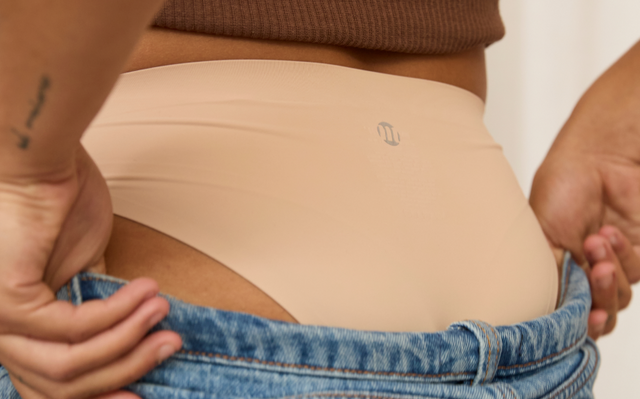It’s normal and natural to experience vaginal discharge that is clear to off-white, but changes in its consistency, colour and smell can be a sign that something is brewing.
So if you’re wondering what’s up with all that discharge before your period, this guide is for you.
Let’s talk about leukorrhea (the white discharge before your period)
Leukorrhea is a broad term used to describe the white, clear or off-white discharge you might notice leading up to your period – or any time, really. This discharge is made up of fluid and cells shed from the cervix and vagina.Dr Andrea Huddleston, a women’s health and natural fertility practitioner, says that although we talk a lot about cervical mucus being crucial for menstrual health, signs of ovulation and fertility purposes, “most of the time, its purpose is to maintain a healthy vagina and to keep bacteria, debris and foreign substances from entering too far into the vagina, cervix and uterus.”
The volume and consistency of Leukorrhea changes throughout our menstrual cycle, driven by the ebb and flow of hormones and what stage of the cycle we’re in. You might find it changes often and can be:
- Watery and clear
- Slippery, stretchy or sticky
- Creamy and white or off-white
- Dry (meaning there’s no discharge)
- Regular gynaecological check-ups can help monitor vaginal discharge and tackle any issues that may arise.
Why does discharge increase before my period?
Why does discharge increase before my period? It’s a hormone thing. Cervical mucous is produced by folds within the cervix called cervical crypts, based on the amount of estrogen circulating during your menstrual cycle. The mucous stored in these crypts changes to a raw, egg-white-like consistency that is stringy, flexible and quite slippery leading up to ovulation.This change is particularly important for fertility. This type of mucus “acts as a sperm transport mechanism which aids fertility and nourishes the sperm on its brief passage through the vagina, up into the uterus and into the fallopian tube where it (hopefully) meets the egg,” says Dr Andrea.
If the egg isn’t fertilised, our bodies make more discharge that’s thick and white or off-white, which helps to keep the vagina’s pH balanced and forms a barrier at the cervix to protect the uterus from harmful bacteria.
In short, our bodies adapt the thickness of cervical mucus to nurture fertility and safeguard our reproductive wellbeing.
Pregnancy aside, vaginal discharge is a kind of in-built housekeeper produced to fight off unwanted bacteria and infection. Did we mention it’s a great natural lubricant, too? Biology at its best.
What signs to look for in your pre-period discharge
White discharge before your period is typical for a lot of people who menstruate, and you have changing hormone levels to thank for that. “You might notice an increase in white discharge followed by a day or so with much less mucus before your period starts,” says Dr Andrea. “Often, this kind of discharge is thick and sticky, similar to glue.”Most people who menstruate will see a fairly consistent discharge pattern from month to month. While a clear or white fluid is typically normal, the following types of discharge warrant a visit to your doctor:
- Yellow, grey or green discharge
- Itching, rashes or other types of irritation
- Changes in vaginal odour (especially fishy or strong smells)
- More goop than usual, in any form
Dissecting discharge isn’t everyone’s cup of tea, but paying attention to what’s going on downtown can help you better understand what’s normal for your vaginal health and help you spot potential issues.
How to protect your vaginal health
To avoid unwanted infections and maintain optimal vaginal wellbeing, it’s important to:- Practise good hygiene – Wash the external area (vulva) with mild, unscented soap and water daily. Avoid douching, as it can disrupt the natural balance of bacteria inside the vagina.
- Wear breathable underwear – Opt for cotton underwear and avoid overly tight clothing to reduce moisture and prevent the build-up of bacteria.
- Stay dry – Change your clothing after swimming or working out.
- Play it safe – Use protection during sex and ensure both you and your partner are tested for STIs regularly.
- Maintain a healthy diet – A balanced diet, including probiotic-rich foods, can promote a healthy vaginal pH.
- Avoid irritants – Steer clear of products with fragrances or potential irritants, like certain laundry detergents or sanitary products.
Go from damp to dry with Modibodi
From protective barriers to slippery sperm escorts, vaginal discharge is all about protecting our vaginal and reproductive wellbeing.
Stay dry and comfortable no matter where you’re at in your cycle with our innovative collection of discharge-proof underwear.








